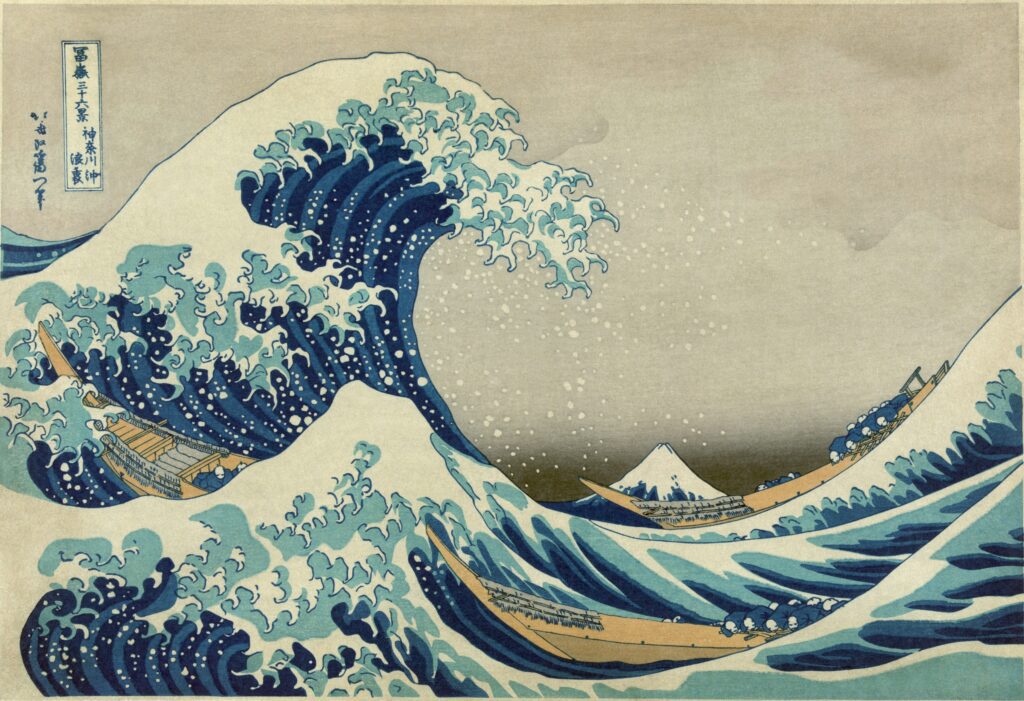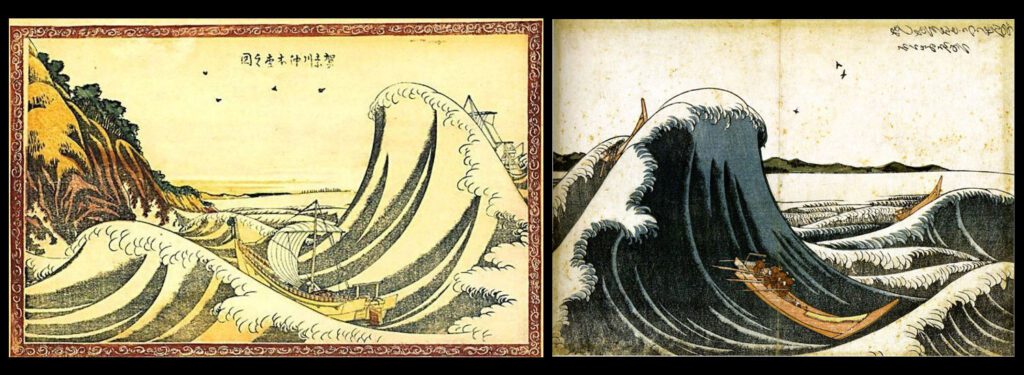You’ve probably seen it in countless places, thinking it was just another piece of merchandise, right? Well. let me tell you a bit about it: The Great Wave off Kanagawa is a famous Japanese artwork created by Katsushika Hokusai between 1830 and 1833, as part of his series “36 Views of Mount Fuji.” The piece was created using the ukiyo-e woodblock printing technique, which involves carving an image into wooden blocks and applying ink to create prints on paper.
It’s one of the most recognised Japanese artworks worldwide and has been the subject of numerous interpretations and tributes in popular culture. It has even appeared on album covers like Neil Halstead’s “Sleeping on Roads” and inspired symphonies such as Debussy’s “La Mere.”
Although the piece is known as “The Great Wave off Kanagawa,” did you know it actually depicts a giant wave in Sagami Bay, near the city of Odawara?

Hokusai was around 70 years old when he created this masterpiece, as it was produced in the later stage of his life. And this wasn’t the only wave he drew. There are two others he made 30 years earlier, which are considered precursors to the final wave.

You can see a much simpler wave in these two pieces , more compact and with a far less precise drawing than what we’re used to seeing in the final version. Additionally, the horizon is visible in the background, not Mount Fuji.
This artwork has influenced artists worldwide, including Vincent van Gogh and Claude Monet, who were inspired by Hokusai’s style and technique. It made a significant impression and had a considerable influence on European art, particularly Impressionism.
Did you know that the cobalt blue Hokusai used to paint the sea and sky was a synthetic pigment recently developed in the West that had just arrived in Japan? It was the first time it was used in a Japanese artwork.
Another fascinating anecdote is that the image contains subtle details, such as fishing boats struggling against the waves and Mount Fuji in the background, which often go unnoticed at first glance. The three boats featured in the print are called “Oshiokuri-bune,” which were used for transporting fish from the sea to the markets in Edo (now Tokyo). The fishermen on the boats are struggling to navigate the treacherous waves, further emphasizing the theme of human vulnerability in the face of nature’s power.
Moreover, Mount Fuji, although small, is the central axis of the composition. It symbolises strength, eternity, and immutability. The giant wave represents the might of nature, while the tiny boats symbolise the smallness and insignificance of humans. It’s a metaphor for the relationship between divine and human.



